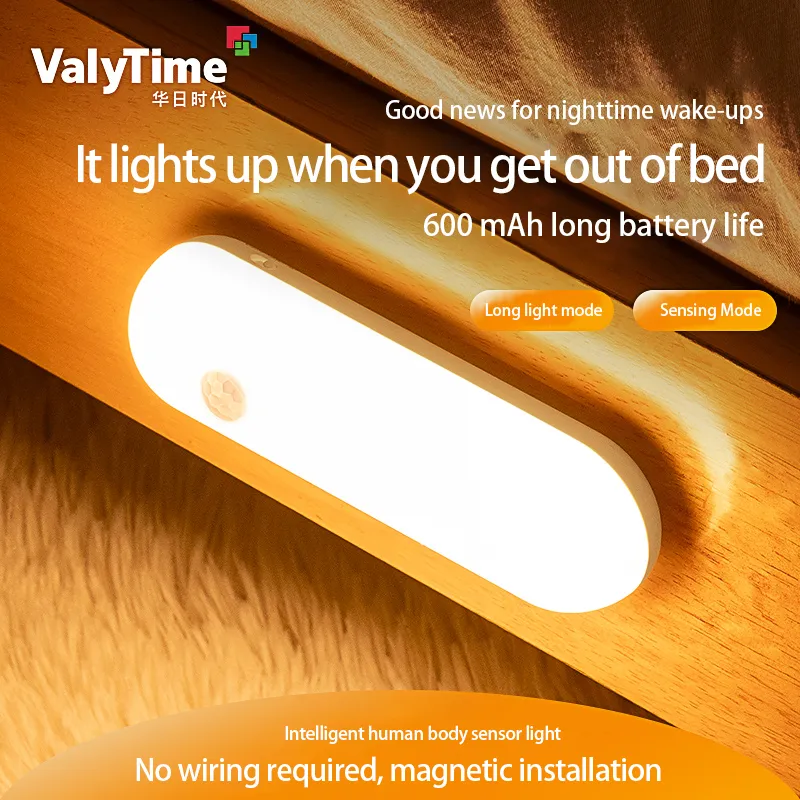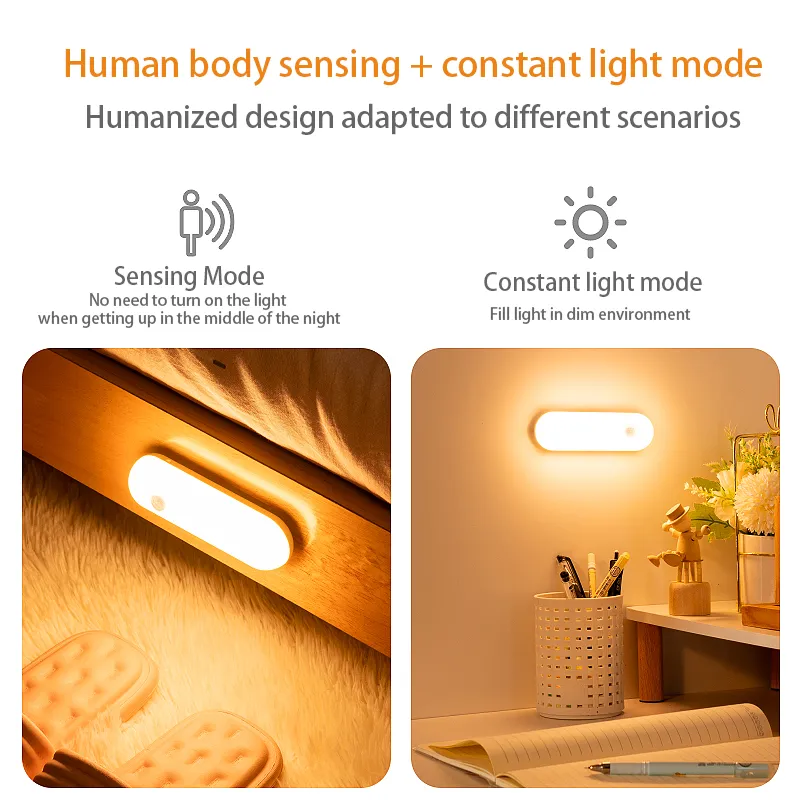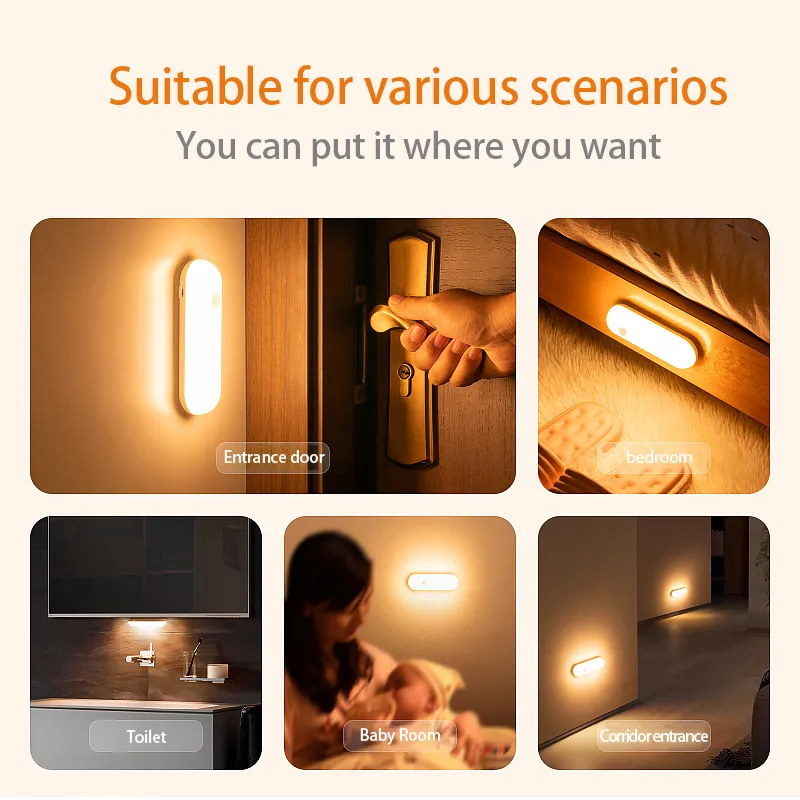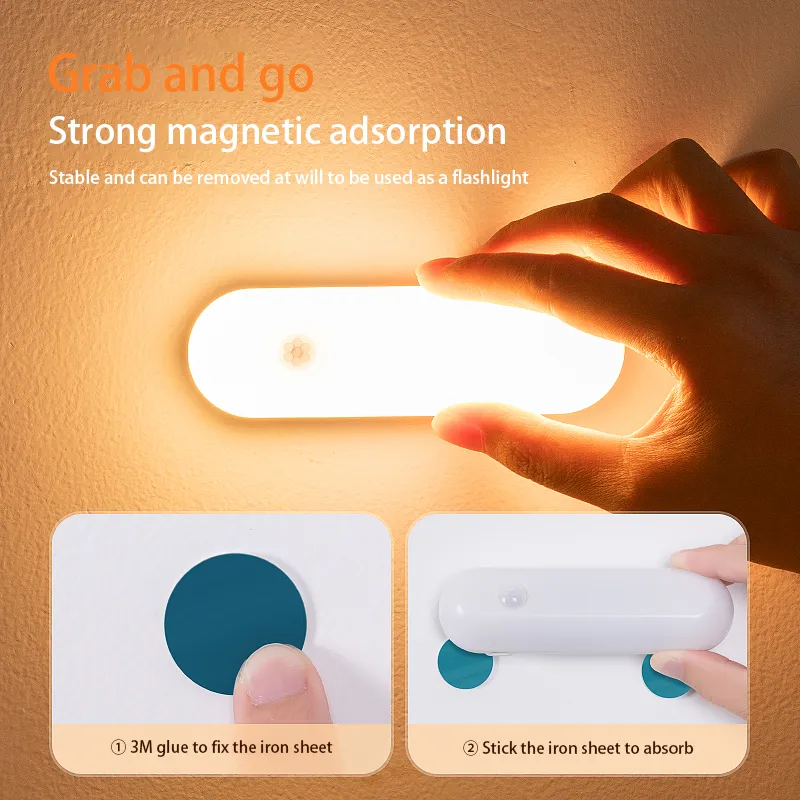Wired and wireless motion sensor lights: what is the difference?
Motion sensor lights can automatically light up when they detect the movement of a person or object, and automatically turn off after a period of time, greatly improving the convenience and energy saving of lighting. In the product category of motion sensor lights, wired motion sensor lights and wireless motion sensor lights are the two main types, and they have their own characteristics in terms of structure, installation method, and usage scenarios.
So, what is the difference between wireless motion sensor lights and wired motion sensor lights? Which one is more suitable for different usage needs?
This article will analyze the differences between the two in detail from multiple aspects such as working principle, power supply method, installation difficulty, application scenario, maintenance cost, and usage stability, so as to help consumers better understand and choose the motion sensor light that suits them.

What are wired motion sensor lights and wireless motion sensor lights?
1. Wired motion sensor lights
Wired motion sensor lights refer to motion sensor lights that are powered by power cords and require fixed wiring installation. These lamps are usually directly connected to the home or commercial power system to ensure continuous and stable power supply, and the switch is controlled by motion sensors.
Features of wired motion sensor lights:
· Relying on wires for power supply, usually connected to the wall power line, requiring professional installation.
· High stability, less affected by battery life, suitable for long-term lighting needs.
· Suitable for fixed places, such as corridors, underground garages, warehouses, public corridors, etc.
2. Wireless motion sensor lights
Wireless motion sensor lights are powered by batteries or rechargeable batteries, do not require external power cords, and are more flexible to install. They usually use infrared sensors (PIR sensors) or microwave sensors to detect the movement of human bodies or objects and automatically control the switch of lighting.
Features of wireless motion sensor lights:
· No wiring is required, relying on batteries for power supply, suitable for places without power interfaces.
· Easy to install, the installation location can be changed at any time, not restricted by wires.
· Suitable for temporary or portable scenes, such as cabinets, stairs, outdoor courtyards, camping, etc.

Wired and wireless motion sensor lights: What is the difference?
1. Power supply method
·Wired motion sensor light: Powered by the power system, usually directly connected to 220V AC, suitable for long-term continuous work, almost unrestricted by power.
·Wireless motion sensor light: Powered by batteries (such as AA/AAA batteries, lithium batteries) or USB rechargeable batteries, the use time is affected by the battery capacity and needs to be replaced or charged regularly.
2. Installation method
·Wired motion sensor light: It requires professional installation by an electrician, involving wall grooving, wiring, power connection and other operations, and the installation is relatively complicated.
·Wireless motion sensor light: The installation method is more convenient, usually using magnetic suction, screw fixing or adhesive stickers, suitable for DIY users, without professional installation.
3. Use stability
·Wired motion sensor light: Because it is directly connected to the power grid, the power supply is stable, and the lighting effect will not be affected by insufficient battery power, so it is suitable for occasions with high requirements for light source stability.
·Wireless motion sensor light: Limited by battery power supply, it needs to be replaced or charged after the power is exhausted, and the brightness may decrease or suddenly go out.
4. Maintenance cost
·Wired motion sensor lights: The maintenance cost is relatively low. You only need to clean the lamp itself or replace the sensor component after long-term use, and there is no need to replace the battery.
·Wireless motion sensor lights: Batteries need to be replaced or charged regularly, and long-term use may increase the cost of purchasing additional batteries.
5. Applicable scenarios
Wired motion sensor lights are suitable for:
·Areas with long-term lighting needs, such as corridors, underground parking lots, offices, large warehouses, shopping malls, etc.
·Places that require continuous power supply to avoid battery life limitations, such as outdoor courtyards and public area lighting.
Wireless motion sensor lights are suitable for:
·Places where wires cannot be installed, such as small spaces such as cabinets, wardrobes, bookshelves, storage rooms, stairs, etc.
·Occasions that require portable use, such as camping, garages, temporary construction sites, outdoor tents, etc.
·Occasions for temporary installation, such as rented houses, temporary work areas, and other environments that are not suitable for large-scale renovation.

What are the advantages of wireless motion sensor lights?
Although wired motion sensor lights have certain advantages in power supply stability and long-term use, wireless motion sensor lights have become increasingly popular in recent years due to their convenience and flexibility.
The advantages of wireless motion sensor lights are as follows:
1. No wiring required, suitable for more occasions
2. Low power consumption, long battery life
3. Suitable for power outage emergency lighting
4. High flexibility, can be changed at any time
1. No wiring required, suitable for more occasions
The most significant advantage of wireless motion sensor lights is that there is no need for complicated wiring, and users can install them in any position without considering the limitations of power interfaces. Especially in the renovation of old houses or rental environments, wiring will involve wall damage, while wireless lamps can be pasted or installed at will, greatly improving the convenience of use.
2. Low power consumption, long battery life
Modern wireless motion sensor lights mostly use LED light sources with extremely low power consumption, coupled with efficient sensing technology (such as PIR infrared sensors), which will only light up when human activity is detected, further reducing power consumption. Some efficient wireless lamps can be used for weeks or even months on a single charge, reducing the frequency of battery replacement.
3. Suitable for power outage emergency lighting
During a power outage, wired lamps cannot work, while wireless motion sensor lamps can still provide lighting by relying on battery power, so they are also very practical as emergency lighting equipment during a power outage.
4. High flexibility and can be changed at any time
Wireless motion sensor lamps can be easily disassembled and installed in different locations, which is very suitable for temporary lighting needs. For example, when getting up at night, users can place wireless lamps at the head of the bed, at the stairwell or at the bathroom door for easy use at any time.

How to choose a motion sensor lamp that suits you?
When buying a motion sensor lamp, you can choose according to the following factors:
1. Usage scenario:
·If it is fixedly installed in long-term use places such as corridors, parking lots, warehouses, etc. at home, it is recommended to choose a wired motion sensor lamp.
·If flexible installation is required, such as wardrobes, bookshelves, outdoor tents, etc., wireless motion sensor lamps are more suitable.
2. Endurance requirements:
·The endurance of wireless motion sensor lamps is affected by battery capacity. If you want to reduce the frequency of charging, you can choose a large-capacity charging model or a low-power LED model.
3. Sensor sensitivity:
· Infrared sensors (PIR) are suitable for indoor use, such as bedrooms, living rooms, cabinets, etc.
· Microwave sensors are more sensitive and can penetrate glass and wooden doors, suitable for outdoor or garage use.
What is your lead time for LED lighting orders?
Our standard lead time ranges from 15 to 30 days, depending on the order size and customization requirements. Thanks to our large-scale manufacturing setup, we maintain strong supply capabilities and fast turnaround. Urgent orders can be expedited based on stock availability. Let us know your timeline and we will arrange production accordingly.
